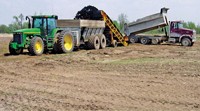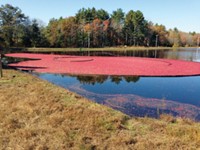Advertisement
Grab your lab coat. Let's get started
Welcome!
Welcome!
Create an account below to get 6 C&EN articles per month, receive newsletters and more - all free.
It seems this is your first time logging in online. Please enter the following information to continue.
As an ACS member you automatically get access to this site. All we need is few more details to create your reading experience.
Not you? Sign in with a different account.
Not you? Sign in with a different account.
ERROR 1
ERROR 1
ERROR 2
ERROR 2
ERROR 2
ERROR 2
ERROR 2
Password and Confirm password must match.
If you have an ACS member number, please enter it here so we can link this account to your membership. (optional)
ERROR 2
ACS values your privacy. By submitting your information, you are gaining access to C&EN and subscribing to our weekly newsletter. We use the information you provide to make your reading experience better, and we will never sell your data to third party members.
Agriculture
USDA funds food and agriculture start-ups
The grants will fund research to make the food system safer and more sustainable
by Matt Blois
August 31, 2023
| A version of this story appeared in
Volume 101, Issue 29
The US Department of Agriculture (USDA) is doling out $12.5 million in funding to food and agriculture start-ups that aim to lower farming’s environmental impact and improve food safety.

The agency is issuing grants to 76 early-stage companies through the Small Business Innovation Research program and the National Institute of Food and Agriculture.
The Tennessee-based start-up Glanris Water Systems, for example, will use the funding to develop biochar that can soak up phosphates and nitrates from fertilizer used on farms. The company produces biochar through the pyrolysis of rice husk. After absorbing the nutrients, the biochar slowly releases them back into the soil, making them available for crops while minimizing pollution.
Working with Mississippi State University chemist Todd Mlsna, Glanris seeks to improve biochar’s ability to absorb nutrients by adding iron oxide, calcium hydroxide, or other chemicals. “Use of biochar in agricultural applications isn’t new, but what we’re doing will hopefully give it a boost over what’s out there now,” says Chief Science Officer Frank Brigano.
Another grant recipient, Quorum Bio, is trying to prevent phosphorus pollution using an entirely different approach. Leveraging technology developed at Lawrence Berkeley National Laboratory, the start-up has proposed engineering soil microbes to convert insoluble forms of phosphorus, which are unavailable to plants, into soluble forms that plants can use.
Taking advantage of the phosphorus already in soil will decrease the need for synthetic fertilizer, CEO Sudharsan Dwaraknath says. “There’s decades of legacy phosphorus that has accumulated in soils,” he says. “[Farmers] are wasting money, missing out on yield, and it does damage to the environment.”
Meanwhile, RedNox, a start-up that emerged from Ohio State University in 2021, wants to prevent greenhouse gas emissions caused by nitrogen fertilizers. The company is using its funding to develop small sensors that can measure nitrous oxide and nitrogen oxides, which can also cause health problems.
The company hopes that farmers will use the device to detect when their fields have too much fertilizer, allowing them to reduce unnecessary applications. The device will also help farmers quantify how much they are reducing greenhouse gas emissions, which could help them qualify for carbon credits.
Other firms receiving grants are focused on protecting people from contaminants in food. Weaver Labs, led by Oklahoma State University chemist Jimmie Weaver, has already produced a material that can filter water to remove per- and polyfluoroalkyl substances (PFAS), a group of degradation-resistant chemicals that can pose health risks. Now, the company hopes to show that adding its material to animal feed will keep PFAS out of chickens. If successful in chickens, the company hopes to move on to livestock.
US regulators are already tightening regulations on PFAS levels in water. Weaver says his material could offer farmers a way to ensure compliance with any future regulations governing PFAS in food.
“Everybody has to monitor how much PFAS is in the water,” Weaver says. “The expectation is that the belt is going to continue to tighten.”





Join the conversation
Contact the reporter
Submit a Letter to the Editor for publication
Engage with us on Twitter